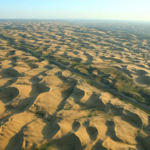Warm plaster is a fairly new product in the domestic market and is often used as an “innovative” type of decoration of the external and internal surfaces of the house. In Europe and Canada, this type of wall processing not only has long existed, but is, perhaps, the main way of insulation, in particular due to the fact that the materials are cheap and very easy to install. Despite the fact that this method of decoration has still weakly rooted in our territory, it is already used by many construction companies, as well as private traders who want to increase the heat efficiency of their home.
Warm plaster with your own hands – insulation based on foam, perlite, vermiculite, polystyrene foam, sawdust
The insulation of the house with foam is familiar, perhaps, to anyone who was at least somehow connected with the construction and insulation of the house, because this simple and inexpensive material can significantly increase the heat efficiency of the house. Foam is used in many areas of human activity, not only in construction, so buying the necessary product will not be particularly difficult.
Another advantage of this material is its noise insulation, since foam is 5-6 cm thick (with proper processing and surface plaster) can completely seal the walls of the building from external noise. Thus you get 2 in 1: thermal insulation and soundproofing plaster. It is also important to resist ignition.
To install warm plaster, you must first attach foam to the wall with dowels, then proceed to application. It is important to remember that the “bridges” for the cold are the joints of the foam, which must first be highlighted in plaster. For better elasticity, a lime solution, or even gypsum (for interior wall decoration) is often added to sand and cement plaster). The thermal conductivity of the plaster in this case will be significantly reduced, which is positively displayed on the efficiency of the heating of the room (up to 25% saving on heating). If the plaster with your own hands is applied, it is better to install a layer of at least 2 cm, but do not overdo it, since a huge layer of plaster is not a significant increase in its effectiveness. For example, between the plaster in 2cm and 4cm, the difference in heat efficiency is not 100%, as expected by many, but only 15%, and a layer of 6cm has only energy efficiency by 4%.
This is due to the fact that the main role of the plaster can not heated the room, namely, to create an air -permeable layer and a durable barrier, which will limit the passage of the cold to a brick or concrete wall. The only minus of such a plaster is the probability of the formation of the fungus on the wall of the house, since the foam does not pass the air. Output-processing the surface of concrete with polyurethane foam at 3-4mm, after which the fungus is not formed on this material.
Stucco based on polystyrene foam is also very popular. Its feature is a low heat transfer coefficient, which is 15-22% lower than in the case of the use of polystyrene. Such plaster costs a little more, but at the same time 2 times cheaper than in the case of mineral wool, so it is in great demand in the modern market.
Those who want to make the house absolutely environmentally friendly can be used an innovative method of finishing concrete walls – stucco based on sawdust. It is worth noting that thanks to the porous surface, as well as the special properties of wood, such plaster holds heat well and has excellent physical and mechanical properties. Many people use this method of plastering surface precisely because of the availability of material. The preparation method is quite simple: the sawdust is mixed with sand-cement plaster, after which the suspension is applied to the wall. Another method of application implies puff mounting of the chipping material on the wall (3-4cm) by means of adhesive mixtures (the option is a little more expensive), after which plastering is sandy and cement plaster on top.
Vermiculite-based plastering is a fairly convenient material that is characterized by high elasticity, low thermal conductivity and increased density due to the adding of veneered vermiculite (has a density of 0.065-0.130 gm*K, while with a foam of 5 cm thick will be 0.9. It can be used both for insulation and for sound insulation and protection from moisture exposure.





